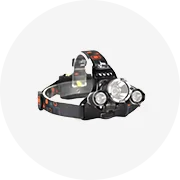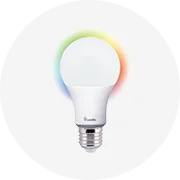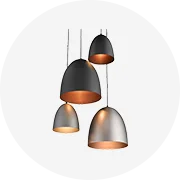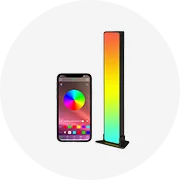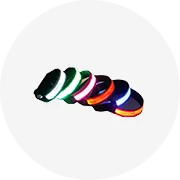Types of Excel LED Sockets
An Excel LED socket is a critical electrical component that connects LED bulbs to the power source while ensuring secure mechanical support and optimal electrical conductivity. Choosing the right type of socket significantly impacts lighting performance, safety, and design aesthetics.
1. Standard LED Sockets
The most common type of sockets used in residential and commercial settings for general-purpose lighting. These sockets securely hold standard LED bulbs and are available in multiple configurations:
- Screw-in (E26/E27): Widely used in North America (E26) and Europe (E27), these sockets accept bulbs with threaded bases and are ideal for everyday lighting needs.
- Pin-based (GU10/G4): Designed for halogen and LED spotlights, GU10 sockets are commonly used in kitchens and accent lighting, while G4 sockets are typically used for small low-voltage lamps.
- Bayonet (B22/BA15d): Popular in the UK and Commonwealth countries, bayonet sockets provide a quick twist-and-lock mechanism for easy bulb installation.
Advantages
- Easy to install and replace
- Widely compatible with standard bulbs
- Cost-effective solution for general use
Limitations
- Limited customization options
- Not suitable for specialized lighting setups
Best for: Homes, offices, and general lighting applications
2. Recessed LED Sockets
Designed to be embedded into ceilings or walls, recessed LED sockets offer a sleek and modern lighting solution that blends seamlessly with interior décor.
Advantages
- Minimalist, clean appearance
- Space-saving design
- Excellent for ambient lighting
Limitations
- More complex installation process
- Requires professional installation in many cases
Best for: Living rooms, hallways, contemporary kitchen designs
3. Track LED Sockets
These sockets mount on a continuous track system that allows lights to be repositioned along the track, providing flexible directional lighting ideal for dynamic environments.
Advantages
- Adjustable light positioning
- Modern aesthetic appeal
- Ideal for highlighting specific areas
Limitations
- Higher initial cost than standard sockets
- May require additional wiring for long runs
Best for: Retail stores, art galleries, museums, and exhibition spaces
4. LED Panel Sockets
Specifically designed to connect LED panel lights to the electrical system, these sockets ensure reliable power delivery and stability for flat-panel lighting systems used in commercial environments.
Advantages
- Uniform light distribution
- Low-profile, elegant design
- Energy-efficient lighting option
Limitations
- Installation may require ceiling modifications
- Specialized replacement parts may be needed
Best for: Office buildings, hospitals, schools, and commercial interiors
5. LED Strip Connectors
Used to join segments of LED strips or connect them to power supplies and controllers, these connectors allow for modular and customizable lighting installations.
Types include:
- Solderless connectors: Quick and easy to install without tools or soldering
- Angle connectors: Allow for corners and bends in strip lighting layouts
- Jumper wires: Provide spacing between strip segments for creative designs
Advantages
- Highly customizable
- Easy DIY installation
- Versatile for both indoor and outdoor use
Limitations
- Connections may be less durable over time
- Waterproof versions required for outdoor use
Best for: Under-cabinet lighting, architectural accents, holiday decorations
6. Specialty LED Sockets
Custom-designed sockets tailored for unique bulb shapes, sizes, or decorative purposes, such as candelabra bases for chandeliers or themed sockets for festive or ornamental lighting.
Advantages
- Adds visual flair and personality
- Supports niche lighting designs
- Perfect for accent and mood lighting
Limitations
- Limited availability
- May not be interchangeable with standard sockets
Best for: Chandeliers, decorative fixtures, hospitality and event lighting
7. Dimmable LED Sockets
Designed to work with dimmable LED bulbs, these sockets enable adjustable brightness levels, offering enhanced ambiance control and energy savings.
Advantages
- Creates adaptable lighting moods
- Energy-efficient operation
- Compatible with smart home systems
Limitations
- Requires compatible dimmer switches
- Potential flickering if mismatched
Best for: Bedrooms, dining rooms, theaters, and hospitality venues
| Type | Installation Complexity | Design Flexibility | Energy Efficiency | Best Application |
|---|---|---|---|---|
| Standard Sockets | Low | Moderate | High | General residential and office lighting |
| Recessed Sockets | High | High | Very High | Living areas, kitchens, modern interiors |
| Track Sockets | Moderate | Very High | High | Retail displays, art galleries, showrooms |
| Panel Sockets | Moderate | Moderate | Very High | Commercial offices, healthcare facilities |
| Strip Connectors | Low | Very High | High | Kitchen cabinets, under-shelf lighting, decor |
| Specialty Sockets | Moderate | Very High | Moderate | Decorative fixtures, chandeliers, events |
| Dimmable Sockets | Moderate | High | Very High | Homes, theaters, restaurants |
Expert Tip: When selecting Excel LED sockets, always verify compatibility with your existing wiring system and bulb types. For dimmable setups, ensure you're using a compatible dimmer switch and dimmable LED bulbs to avoid flickering or reduced lifespan.
Specifications and Maintenance of Excel LED Sockets
Detailed Specifications of Excel LED Sockets
Excel LED sockets are precision-engineered components designed to provide secure, reliable electrical connections for LED lighting systems. Understanding their specifications is crucial when selecting the right socket for your application. Below is a detailed breakdown of key specification categories:
Dimensions
Excel LED sockets come in various physical configurations tailored to match specific LED chip dimensions. These include precise measurements such as socket diameter, height, and mounting hole spacing where applicable.
Accurate dimensional matching ensures proper mechanical fit and alignment, preventing issues like misalignment or improper seating that could compromise performance or longevity.
Electrical Specifications
Each Excel LED socket is engineered with defined voltage, current, and power ratings that align with the requirements of the LED chips they support. These specifications ensure compatibility and stable operation under expected load conditions.
Selecting a socket with appropriate electrical characteristics helps prevent overheating, connection failures, or premature degradation of both the socket and the LED itself.
Compatibility Features
Designed for versatility, Excel LED sockets accommodate different types of LEDs including surface-mount (SMD), through-hole, and other specialized configurations. They are also compatible with various driver circuits such as constant current or constant voltage systems.
This adaptability makes them suitable for a wide range of applications, from residential lighting to industrial environments, without compromising functionality or reliability.
Material Composition
Manufactured using high-quality materials such as thermoplastics, ceramics, and metals, these sockets balance electrical conductivity, thermal management, mechanical strength, and resistance to environmental factors like corrosion and wear.
The choice of material influences performance characteristics such as heat dissipation, insulation properties, and durability under continuous use or harsh operating conditions.
Mounting and Installation Options
Excel LED sockets offer multiple mounting solutions including surface mount, through-hole installation, and adhesive-backed options. Additional features like alignment pins, guides, and retaining clips facilitate easy and accurate LED placement.
These design elements streamline the assembly process and help maintain consistent positioning, which is critical for optimal light output and long-term operational stability.
Performance Characteristics
Engineered for high-performance applications, Excel LED sockets feature low contact resistance to ensure stable electrical connections while efficiently dissipating heat away from the LED chip.
They are built to withstand demanding environments and extended usage cycles, offering long-term reliability, minimal maintenance, and sustained luminous efficiency.
| Specification | Critical Consideration | Recommendations |
|---|---|---|
| Socket Dimensions | High | Match precisely with LED chip size; verify mounting hole spacing if applicable |
| Voltage/Current Rating | High | Ensure compatibility with LED driver system and avoid exceeding rated values |
| Thermal Conductivity | Medium | Choose sockets with enhanced heat dissipation for high-power LED applications |
| Mounting Type | Medium | Select based on PCB design, panel thickness, and accessibility for replacement |
Recommended Maintenance Practices
Proper care and maintenance of Excel LED sockets contribute significantly to the overall performance and lifespan of LED lighting systems. The following best practices should be followed:
Important: Always inspect the entire socket array when addressing any single unit. Replacing only one socket in a multi-socket setup may create imbalance in electrical load distribution or thermal behavior, potentially leading to uneven performance or accelerated wear on newer components.
How to Choose Excel LED Sockets
Selecting the right Excel LED socket is essential for ensuring optimal performance, longevity, and safety of your lighting system. Whether you're outfitting a residential, commercial, or industrial environment, understanding the key selection criteria will help you make an informed decision that aligns with both technical requirements and budgetary considerations.
Type of LED Light Bulb in Use
The type of LED bulb being used plays a crucial role in determining the correct socket compatibility. Common types include A19, A60, E27, E26, and GU10, each designed for specific applications and fixture types. Choosing a socket that matches the bulb's base ensures a secure connection and prevents electrical issues such as arcing or poor conductivity.
- E26 sockets are standard for medium screw bases commonly used in North America
- E27 sockets are the European equivalent of E26
- A19 and A60 refer to bulb shapes rather than bases, but often use E26/E27 sockets
- GU10 bulbs have two pins and require specialized pin-based sockets
Key consideration: Always verify bulb base type before purchasing a socket to ensure proper fit and functionality
Voltage Requirements
Different LED sockets are rated for various voltage ranges, which must align with the specifications of the connected LED bulbs. Using mismatched voltage can lead to premature failure, flickering, or even fire hazards. Most LED bulbs operate within a range of 10–50 volts, though some are designed for direct mains voltage (120V or 230V).
- Low-voltage LEDs typically require sockets compatible with 12V or 24V systems
- Mains-voltage LEDs work with standard 120V/230V sockets
- Check whether the socket supports AC or DC current if using a transformer or driver
- Ensure the socket’s maximum voltage rating exceeds the bulb’s requirement
Measurement tip: Refer to the bulb packaging or technical data sheet for exact voltage specifications
Socket Size and Compatibility
Excel LED sockets come in a variety of sizes and mounting configurations tailored for different fixtures and installation environments. Ensuring dimensional compatibility between the socket and the existing setup is critical for seamless integration and reliable operation.
- Standard sockets like E26 and E27 are widely used in general lighting applications
- Industrial settings may require larger or more robust sockets such as mogul (E39) bases
- Track lighting and recessed downlights often use bi-pin or push-fit sockets
- Outdoor or wet location installations need waterproof-rated sockets (IP65 and above)
Consider: Mounting orientation, fixture depth, and wiring clearance when selecting socket size
Application Requirements
The intended application significantly influences the ideal socket choice. Different environments demand varying levels of durability, temperature resistance, and protection against moisture, dust, and vibration.
- Outdoor lighting requires weatherproof sockets with UV and corrosion resistance
- Kitchen and bathroom installations benefit from moisture-resistant designs
- Industrial facilities may need high-temperature resistant sockets for heat-prone areas
- Commercial retail spaces might prioritize aesthetic appeal and dimming compatibility
Performance impact: Application-specific sockets enhance reliability and reduce maintenance needs
Quality and Standards Compliance
High-quality materials and adherence to industry standards are vital for long-term performance and safety. Inferior sockets can compromise the entire lighting system, leading to frequent replacements, electrical faults, or unsafe conditions.
- Look for sockets made from heat-resistant thermoplastics or ceramic for high-temperature stability
- Choose nickel-plated brass contacts for superior conductivity and corrosion resistance
- Verify compliance with UL, CSA, CE, or RoHS standards depending on regional regulations
- Opt for sockets with built-in thermal cut-offs or arc-fault protection where applicable
Safety tip: Always check for certifications and manufacturer warranties
Budget Considerations
While cost is always a factor, it should be weighed against long-term value. High-performance sockets may carry a higher initial price tag, but their durability, energy efficiency, and reduced maintenance costs often justify the investment.
- Entry-level sockets suit basic indoor lighting with minimal environmental stressors
- Mid-range sockets offer better build quality and longer lifespan for moderate use
- Premium sockets provide enhanced safety features and are ideal for critical or harsh environments
- Volume discounts are often available for bulk purchases by retailers or facility managers
Value insight: Calculate total cost of ownership including replacement frequency and downtime
Selection Advice: When in doubt, consult with a qualified electrician or lighting specialist to ensure you're choosing the most appropriate Excel LED socket for your application. It's also wise to purchase a small quantity first to test performance before committing to a large-scale rollout.
| Socket Type | Common Applications | Voltage Range | Special Features |
|---|---|---|---|
| E26 / E27 | Residential & Commercial Lighting | 120V / 230V | Standard screw base, widely compatible |
| GU10 | Recessed Lighting, Track Lighting | 12V / 120V | Bi-pin base, directional lighting |
| Industrial Mogul (E39) | Warehouses, Street Lights | 120V–277V | Heavy-duty construction, high-wattage support |
| Weatherproof Socket | Outdoor Lighting, Wet Areas | 120V / 230V | Sealed housing, IP65+ rating |
| Dimmable Socket | Hospitality, Residential | 120V / 230V | Smooth dimming control, low minimum load |
Comprehensive Guide to DIY Replacement of Excel LED Light Sockets
Replacing an Excel LED light socket is a practical and cost-effective home maintenance task that can restore proper lighting function in your space. Most Excel LED bulbs utilize the standard E26 screw base, making them compatible with a wide range of household fixtures. However, issues may arise when the socket itself becomes damaged or incompatible, affecting performance and safety.
Safety Warning: Always disconnect the power supply before working on any electrical fixture. Improper handling can lead to electric shock or fire hazards. If you're unsure about any step, consult a licensed electrician.
Common Signs That Your LED Socket Needs Replacement
Identifying problems early can prevent further damage to both the bulb and the fixture. Below are key indicators that it’s time to replace your Excel LED socket:
- Diminished Illumination: While LED bulbs naturally degrade in brightness over time, sudden dimming could point to a faulty socket. Unlike incandescent bulbs that typically fail suddenly, LEDs often show gradual decline. A loose connection or corrosion in the socket can restrict current flow.
- Flickering Lights: Intermittent flickering usually signals a poor connection between the bulb and the socket. This can be due to worn-out contacts inside the socket, unstable voltage, or loose wiring. Prolonged flickering can shorten the lifespan of your LED bulbs and potentially damage the socket further.
- Incompatible Sockets: Although most Excel LED bulbs use E26 bases (standard medium base), some fixtures require different types like E12 (candelabra) for decorative lighting or GU24 bases for energy-efficient systems. Using an incompatible bulb can cause improper seating, overheating, or failure to operate altogether. Recessed lighting designed for halogen bulbs might need retrofit kits for safe LED installation.
DIY Tip: Before replacing the socket, ensure the issue isn’t with the bulb itself by testing it in another known working fixture. Also, check if the circuit breaker has tripped or if there's a blown fuse in the system.
Step-by-Step Replacement Procedure
Follow these detailed steps to safely and effectively replace your Excel LED socket. The process should take less than an hour and requires only basic tools.
- Select the Correct Replacement Socket
- Match the new socket type (E26, E27, etc.) and wattage rating to the original. Confirm compatibility with the bulb being used.
- Purchase from a reputable hardware store or directly from the manufacturer for quality assurance.
- Turn Off the Power Supply
- Locate the circuit breaker panel and switch off the corresponding breaker for the fixture. Use a voltage tester to confirm no power is running to the socket before proceeding.
- If fuses are used instead of breakers, remove the appropriate one to cut power.
- Inspect and Document the Existing Setup
- Remove the old bulb and examine how the socket is wired to the fixture. Look for signs of wear, burn marks, or loose connections.
- Take a clear photo or sketch a simple diagram showing wire connections to reference during installation.
- Remove the Old Socket
- Use a screwdriver to loosen any mounting screws or fasteners securing the socket to the fixture housing.
- Carefully disconnect the wires from the old socket. Typically, there will be two wires: black (hot) and white (neutral). Some may also have a green or bare copper ground wire.
- Label the wires if necessary to avoid confusion during reconnection.
- Install the New Socket
- Connect the wires to the new socket according to the manufacturer’s instructions. Usually, this involves attaching the black wire to the brass terminal and the white wire to the silver terminal. Secure the ground wire to its designated point if applicable.
- Ensure all connections are tight and secure. Wrap exposed wire ends with electrical tape for added insulation and safety.
- Secure the Socket and Reassemble the Fixture
- Place the new socket back into the fixture housing and tighten the mounting screws or clips.
- Reattach any covers, shades, or glass panels that were removed earlier.
- Restore Power and Test
- Return the circuit breaker to the ON position or reinstall the fuse.
- Screw in a compatible LED bulb and turn on the switch to test the new socket. If the bulb doesn't light up, double-check all connections and ensure the breaker is fully engaged.
| Replacement Step | Key Actions | Common Issues | Tools Needed |
|---|---|---|---|
| Preparation | Select matching socket type, gather tools | Mismatched socket, missing screwdrivers | Voltage tester, screwdrivers, wire stripper |
| Power Disconnection | Turn off circuit breaker, verify no power | Accidental contact with live wires | Circuit breaker label, gloves |
| Socket Removal | Document wiring, disconnect wires carefully | Miswiring, damaged terminals | Camera or notebook, pliers |
| Installation | Secure wire connections, mount new socket | Loose connections, incorrect polarity | Wire nuts, electrical tape |
| Testing | Restore power, install bulb, check operation | Bulb not lighting, intermittent issues | Working LED bulb, multimeter |
Pro Tip: Consider upgrading to a dimmable socket if you plan to use dimmable LED bulbs. Ensure the socket and bulb are both rated for dimming compatibility to avoid flickering or inconsistent performance.
When to Call a Professional
While replacing a socket is generally manageable for most DIYers, certain situations warrant professional assistance:
- You're dealing with complex or outdated wiring systems (e.g., knob-and-tube).
- The fixture is part of a multi-switch setup or integrated lighting system.
- There are persistent electrical issues even after replacement.
- You lack confidence or experience with electrical work.
A qualified electrician can assess the entire lighting circuit, identify potential hazards, and ensure everything meets local building codes.
Final Note: Regular inspection and timely replacement of faulty sockets help maintain efficient lighting, prolong bulb life, and ensure electrical safety in your home. Always prioritize safety and accuracy when performing electrical repairs.
Understanding Excel LED Sockets in Automotive Lighting
An Excel LED socket is a specialized electrical connector designed specifically for LED lighting systems in vehicles and other applications. It serves as the interface between the LED bulb or module and the vehicle’s wiring system, ensuring secure electrical contact while providing mechanical support. These sockets are engineered to handle the unique requirements of LED technology, including low voltage operation, heat dissipation, and compatibility with modern electronic control units (ECUs).
The design typically includes durable materials like high-temperature resistant plastics and corrosion-resistant metal contacts to ensure longevity and consistent performance under varying conditions.
Using Excel LED sockets in vehicles brings several key advantages:
- Superior Lighting Quality: LEDs provide brighter, more focused light compared to traditional halogen bulbs, improving visibility and safety.
- Extended Lifespan: LED systems can last tens of thousands of hours, significantly reducing replacement frequency and maintenance costs.
- Energy Efficiency: LEDs consume less power, which helps reduce the load on the vehicle's electrical system and improves fuel efficiency slightly.
- Durability: With shock-resistant designs and robust construction, these sockets perform reliably even in rough driving conditions.
- Compatibility: They are often designed to work seamlessly with CANbus systems, preventing error codes that can occur when upgrading from halogen bulbs.
These benefits make Excel LED sockets a smart investment for both OEM manufacturers and aftermarket installers.
Excel LED sockets are not limited to specific vehicle models but are available in various configurations to suit different applications. However, proper selection based on the vehicle's specifications is crucial for optimal performance and compatibility.
Key considerations include:
- Bulb Type: Common types include T10, PY21W, W21W, BAU15S, and others depending on the lighting function (turn signals, brake lights, interior lights, etc.).
- Socket Size and Shape: Must match the original equipment manufacturer (OEM) dimensions to ensure a snug fit and secure connection.
- Electrical Specifications: Voltage and current ratings should align with the vehicle's electrical system and the connected LED modules.
Universal versions exist, but for best results and to avoid issues like flickering or error messages, it's recommended to choose model-specific or compatible variants tailored to your vehicle’s electronics.
Excel LED sockets are built to be low-maintenance components, but periodic inspection and cleaning can help maintain their performance over time. Here’s how to care for them:
- Visual Inspection: Check for signs of wear, melting, or discoloration that may indicate overheating or poor connections.
- Corrosion Check: Look for greenish buildup (commonly seen in copper contacts) or white residue around terminals, especially in humid environments.
- Cleaning Contacts: Use electrical contact cleaner and a soft brush or cloth to remove dust or oxidation that could interfere with conductivity.
- Secure Fit: Ensure the socket holds the bulb firmly without wobbling or resistance during installation/removal.
Proper maintenance ensures long-term reliability and prevents potential issues such as intermittent lighting or electrical faults.
Many Excel LED sockets are designed with water-resistant or fully waterproof features, making them suitable for exterior automotive lighting applications where exposure to moisture, rain, or road spray is common. These sockets often feature:
- Sealed Housing: Molded rubber gaskets or O-rings that prevent water ingress.
- IP Ratings: Look for sockets rated IP65 or higher, indicating protection against dust and water jets.
- Corrosion-Resistant Materials: Nickel-plated brass or phosphor bronze contacts that resist rust and oxidation.
If you're installing LED sockets in areas exposed to the elements—such as tail lights, fog lights, or license plate lamps—it’s essential to select waterproof variants. Always verify the product specifications before purchase to ensure environmental protection meets your needs.










































